Los Angeles is a sprawling Southern California city and the center of the nation’s film and television industry. Near its iconic Hollywood sign, studios such as Paramount Pictures, Universal and Warner Brothers offer behind-the-scenes tours. On Hollywood Boulevard, TCL Chinese Theatre displays celebrities’ hand- and footprints, the Walk of Fame honors thousands of luminaries and vendors sell maps to stars’ homes.
Los Angeles is the commercial, financial, and cultural center of Southern California. With a population of roughly 3.9 million as of 2020, Los Angeles is known for its Mediterranean climate, ethnic and cultural diversity, Hollywood film industry, and sprawling metropolitan area. The city of Los Angeles lies in a basin in Southern California adjacent to the Pacific Ocean extending through the Santa Monica Mountains and into the San Fernando Valley. It covers about 469 square miles (1,210 km2), and is the seat of Los Angeles County, which is the most populous county in the United States with an estimated 9.86 million as of 2022.
Home to the Chumash and Tongva indigenous peoples, the area that became Los Angeles was claimed by Juan Rodríguez Cabrillo for Spain in 1542. The city was founded on September 4, 1781, under Spanish governor Felipe de Neve, on the village of Yaanga. It became a part of Mexico in 1821 following the Mexican War of Independence. In 1848, at the end of the Mexican–American War, Los Angeles and the rest of California were purchased as part of the Treaty of Guadalupe Hidalgo, and thus became part of the United States. Los Angeles was incorporated as a municipality on April 4, 1850, five months before California achieved statehood. The discovery of oil in the 1890s brought rapid growth to the city. The city was further expanded with the completion of the Los Angeles Aqueduct in 1913, which delivers water from Eastern California.
1.Griffith Park and Griffith Observatory
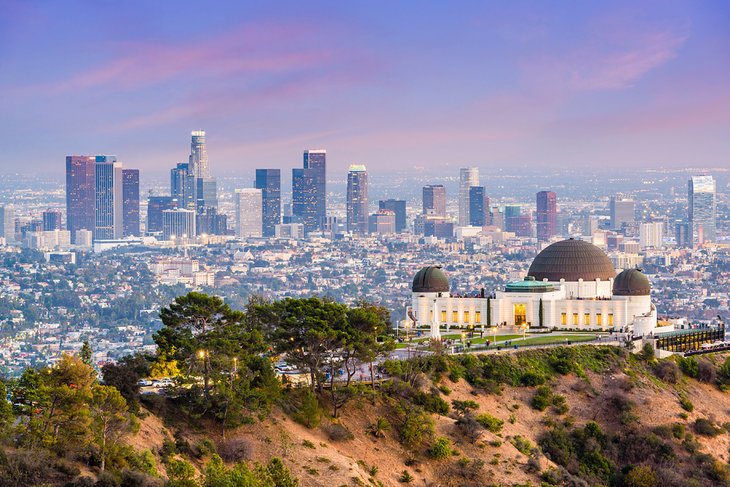
Griffith Observatory is an observatory in Los Angeles, California on the south-facing slope of Mount Hollywood in Griffith Park. It commands a view of the Los Angeles Basin including Downtown Los Angeles to the southeast, Hollywood to the south, and the Pacific Ocean to the southwest.
Griffith Park, in the eastern part of the Santa Monica Mountains, and covering an area of 4,210 acres, is the largest city park in Los Angeles. It’s home to the Los Angeles Zoo, the Griffith Observatory, a planetarium, and a Greek theater. It’s also home to golf courses, tennis courts, hiking trails, and a riding center created for the 1984 Olympic Games. And walking trails and scenic drives through the mountains offer views over the city and beyond.
The Griffith Observatory is one of the city’s most interesting experience-based attractions, and it’s all free to the public. On the grounds are exhibits and telescopes. The main highlight is a look through the Zeiss telescope, used for viewing the moon and planets. You can use the telescopes free each evening the facility is open. Also on-site are solar telescopes used for viewing the sun.
Het gebouw werd voor het eerst opengesteld aan het publiek op 14 mei 1935 en werd in de eerste 5 dagen bezocht door 13.000 mensen. Op 3 november 2006 werd het observatorium heropend na een renovatie en uitbreiding van vier jaar. Sinds 1974 is dr. Ed Krupp directeur van het observatorium.
De toegang tot het observatorium en de tentoonstellingen is gratis, geheel volgens de laatste wil van kolonel Griffith. Voor parkeren moet echter wel betaald worden. Voor het bekijken van de hoge-resolutievideo die met een laser op de binnenkant van een grote koepel in het planetarium geprojecteerd wordt, moet een bescheiden bijdrage betaald worden. Het observatorium is vijf dagen per week geopend, in de zomermaanden zes dagen per week.
Het gebouw is decor geweest in diverse bioscoopfilms, tv-films, tv-series en muziekvideoclips. Daarnaast werd het ook meermaals digitaal in beeld gebracht voor verschillende games.
2.Disneyland Resort
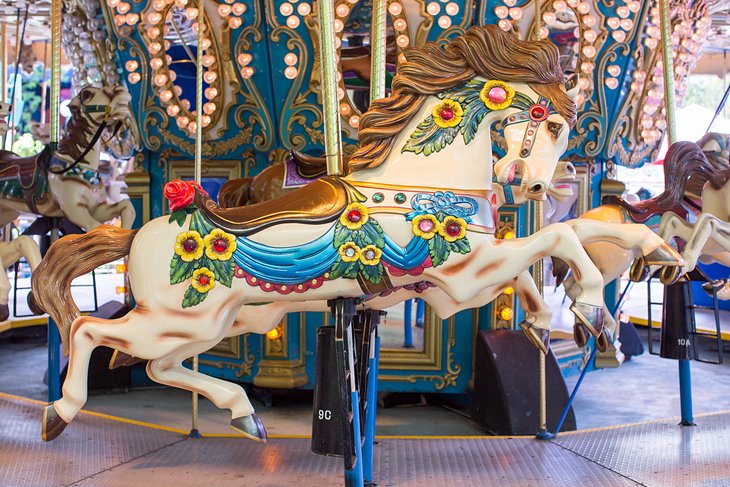
The Disneyland Resort, commonly known as Disneyland, is an entertainment resort in Anaheim, California.
ust outside Los Angeles, Disneyland is California’s premier family vacation destination, attracting visitors since the 1950s. Disneyland Park, with rides and experiences in elaborately created theme sets, is what most people picture when they imagine Disneyland. The Disneyland California Adventure Park, created during one of the expansions, holds even more action and adventure, with seven lands based on movie themes.
Relatively new to the scene are several Star Wars-themed rides. They include Star Wars Rise of the Resistance and the Millennium Falcon: Smuggler’s Run. The rides are in the new Star Wars Galaxy Edge area, which is full of shops and restaurants made out to look like the Black Spire Outpost on the planet of Batuu.
The resort was developed by Walt Disney in the 1950s. When it opened to guests on July 17, 1955, the property consisted of Disneyland, its 100-acre parking lot (which had 15,167 spaces),[1] and the Disneyland Hotel, owned and operated by Disney’s business partner Jack Wrather. After the success with the multi-park, multi-hotel business model at Walt Disney World in Lake Buena Vista, Florida, Disney acquired large parcels of land adjacent to Disneyland to apply the same business model in Anaheim.
3.Hollywood
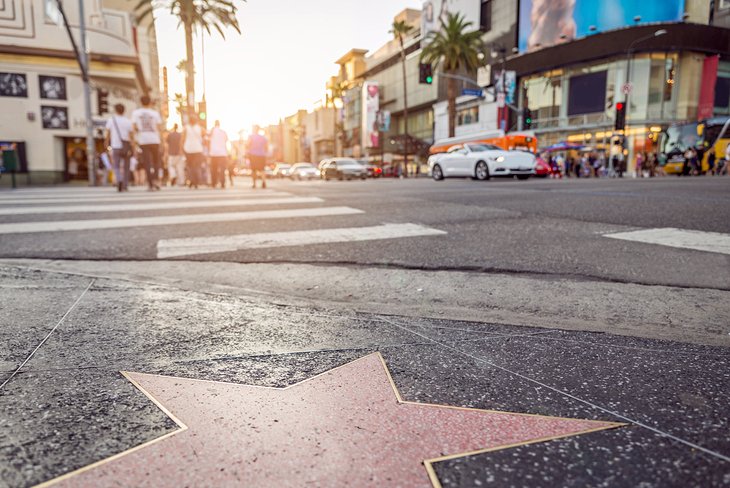
A larger-than-life symbol of the entertainment business, Hollywood beckons tourists with landmarks like TCL Chinese Theatre and star-studded Walk of Fame. Highlights include Paramount Pictures, historic music venues like the Hollywood Bowl, and Dolby Theatre, home of the Oscars. Scenesters can choose from improv comedy clubs, retro-cool bars and velvet-roped nightclubs. Locals frequent eateries in nearby Thai Town.
A suburb of Los Angeles, Hollywood is a destination in itself, with its own unique history and iconic sites. The attractions in Hollywood are closely associated with the film industry and the glamour of the silver screen.
The hillside Hollywood sign, Hollywood Boulevard, and the Chinese Theatre are some of the top places to visit. If you’re lucky, you might even spot a celebrity or two out for a shopping trip on Rodeo Drive. A fun family activity in Hollywood is finding all your favorite actors’ stars among the 2,500 plus on the Walk of Fame.
Sinds de stad als wijk opging in Los Angeles, heeft Hollywood geen eigen bestuursorgaan meer. Een tijdlang is er een informele burgemeester van Hollywood Mayor of Hollywood geweest, benoemd door de lokale kamer van koophandel (Hollywood Chamber of Commerce). Johnny Grant hield deze positie van 1980 tot zijn dood op 9 januari 2008 maar de functie is sindsdien niet meer ingevuld.
Bij de annexatie zijn de namen en nummers van de straten gewijzigd in de vorm zoals we ze heden ten dage kennen. Zo werd Prospect Avenue, gewijzigd in Hollywood Boulevard en werden alle nummers van dat district gewijzigd.
4.The Getty Center
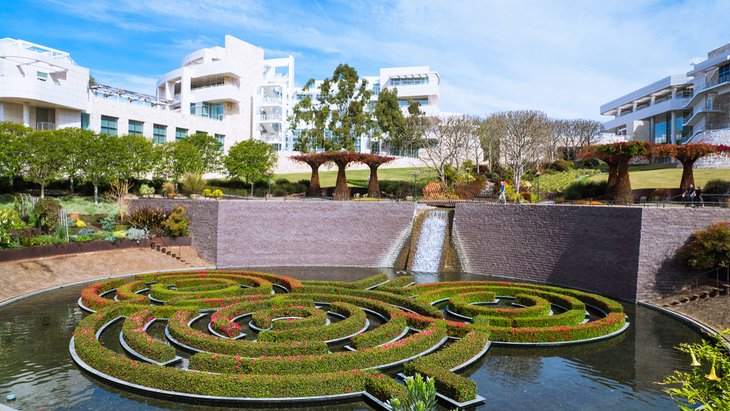
The Getty Center, in Los Angeles, California, is a campus of the Getty Museum and other programs of the Getty Trust. The $1.3 billion center opened to the public on December 16, 1997 and is well known for its architecture, gardens, and views overlooking Los Angeles.
On a hilltop in the Santa Monica Mountains, the Getty Center, designed by Richard Meier, is a huge complex measuring 0.75 square miles and set on 110 acres. The unique building and the beautiful grounds provide the perfect setting for this impressive museum. Collections include European paintings, drawings, sculpture, and decorative arts, as well as 19th- and 20th-century photography.
Located in the Brentwood neighborhood of Los Angeles, the center is one of two locations of the J. Paul Getty Museum and draws 1.8 million visitors annually. (The other location is the Getty Villa in the Pacific Palisades neighborhood of Los Angeles, California.) The center branch of the museum features pre-20th-century European paintings, drawings, illuminated manuscripts, sculpture, and decorative arts; and photographs from the 1830s through present day from all over the world.In addition, the museum’s collection at the center includes outdoor sculpture displayed on terraces and in gardens and the large Central Garden designed by Robert Irwin. Among the artworks on display is the Vincent van Gogh painting Irises.
Designed by architect Richard Meier, the campus also houses the Getty Research Institute (GRI), the Getty Conservation Institute, the Getty Foundation, and the J. Paul Getty Trust. The center’s design included special provisions to address concerns regarding earthquakes and fires.
5.Petersen Automotive Museum
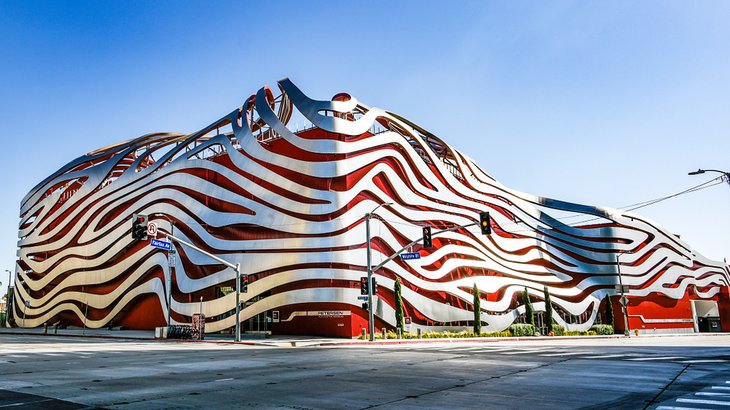
The Petersen Automotive Museum is located on Wilshire Boulevard along Museum Row in the Miracle Mile neighborhood of Los Angeles. One of the world’s largest automotive museums, the Petersen Automotive Museum is a nonprofit organization specializing in automobile history and related educational programs.
Petersen Automotive Museum. Spread over four floors are a mix of permanent and temporary exhibits featuring more than 300 cars and motorcycles, ranging from perfectly preserved items from 1886 right through to concepts for the 21st century.
The museum underwent major renovations and is now one of the most modern institutions of its kind. The exterior façade is an eye-catching architectural masterpiece. For an additional fee, you can sign up for either a 90- or 120-minute guided Vault tour, which provides additional insight on rare and unusual cars.
Founded on June 11, 1994, by magazine publisher Robert E. Petersen and his wife Margie, the $40-million Petersen Automotive Museum is owned and operated by the Petersen Automotive Museum Foundation. The museum was originally located within the Natural History Museum of Los Angeles County, and later moved to a historic department store designed by Welton Becket. Opened in 1962, the building first served as a short-lived U.S. branch of Seibu Department Stores, before operating as an Ohrbach’s department store from 1965 to 1986. Six years after Ohrbach’s closed, Robert Petersen selected the largely windowless site as an ideal space for a museum—allowing artifacts to be displayed without harmful exposure to direct sunlight.
In 2015, the museum underwent an extensive $125 million renovation. The building’s façade was redesigned by the architectural firm Kohn Pedersen Fox, and features a stainless-steel ribbon assembly made of 100 tons of 14-gauge type 304 steel in 308 sections, 25 supports and 140,000 custom stainless-steel screws. Designers at The Scenic Route configured interior spaces to accommodate changing exhibits. The remodeled museum opened to the public on December 7, 2015.
6.Santa Monica
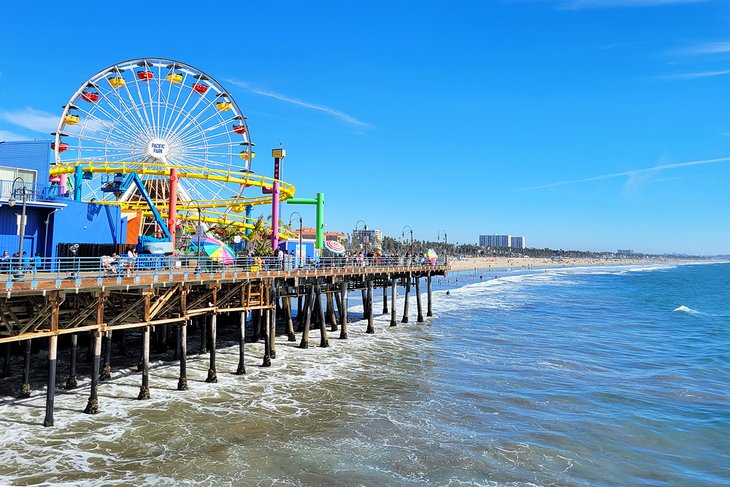
Santa Monica is a coastal city west of downtown Los Angeles. Santa Monica Beach is fringed by Palisades Park, with views over the Pacific Ocean. Santa Monica Pier is home to the Pacific Park amusement park, historic Looff Hippodrome Carousel and Santa Monica Pier Aquarium. Next to the pier is Muscle Beach, an outdoor gym established in the 1930s. In the city center, Bergamot Station houses several art galleries.
Santa Monica is a unique destination that is both chic and laid-back, with a population that ranges from surfers, skateboarders, and yoga devotees to techies and business people. The beautiful stretch of golden sand along the coast and the famous Santa Monica Pier, with its iconic Ferris wheel, are what most tourists come to enjoy, but you can find a variety of experiences in this beachfront city next to LA.
The downtown district of Santa Monica is lively throughout the day and night. Shoppers will find a range of options, from quirky vintage stores to high-end boutiques. Check out the Third Street Promenade for shopping and people watching, including catching the various street performers.
Santa Monica traces its history to Rancho San Vicente y Santa Monica, granted in 1839 to the Sepúlveda family of California. The rancho was later sold to John P. Jones and Robert Baker, who in 1875, along with his Californio heiress wife Arcadia Bandini de Stearns Baker, founded Santa Monica, which incorporated as a city in 1886. The city developed into a seaside resort during the late 19th and early 20th centuries, with the creation of tourist attractions such as Palisades Park, the Santa Monica Pier, Ocean Park, and the Hotel Casa del Mar.
7.California Science Center
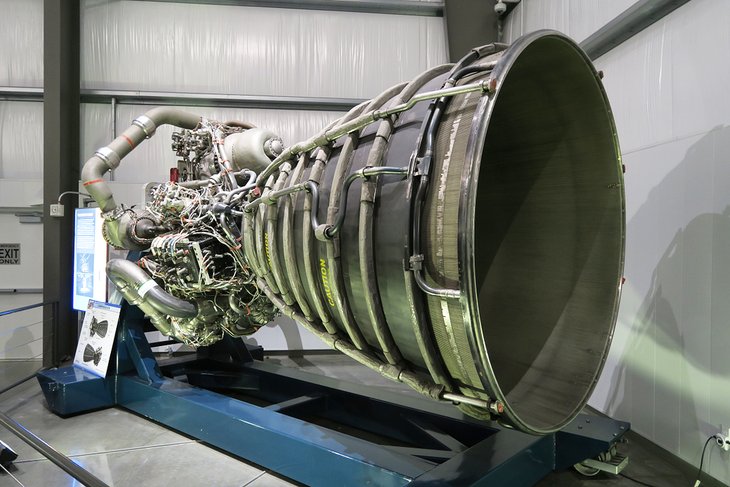
The California Science Center is a state agency and museum located in Exposition Park, Los Angeles, next to the Natural History Museum of Los Angeles County and the University of Southern California.
The California Science Center, open to the public free of charge, is home to the Space Shuttle Endeavour, as well as other major exhibits. Mission 26: The Big Endeavour is currently on display at the Samuel Oschin Pavilion, while the new Samuel Oschin Air and Space Center is being built. You can see the space shuttle, as well as artifacts from the space mission, and learn all about it and the people involved in the program.
Other exhibits at the Science Center cover such topics as the living world, technology, and ecosystems. The Ecosystems exhibit features an impressive 188,000-gallon kelp tank, as well as live plants, animals, and fish. In addition to the permanent exhibits, the California Science Center also features special exhibits, for an ever-changing selection of things to see.
The California Natural Resources Agency oversees the California Science Center and the California African American Museum. Founded in 1951 as the “California Museum of Science and Industry”, the Museum was remodeled and renamed in 1998 as the “California Science Center”. The California Science Center hosts the California State Science Fair annually.
Admission includes access to the permanent exhibits, such as the Space Shuttle Endeavour and other prominent aircraft and spacecraft, and to various demonstrations. A separate ticket is required for the IMAX movies, most special traveling exhibitions, and special activities that include a climbing wall, motion simulator, and a high-wire bicycle.









